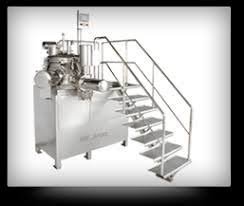SOP for Saizoner Mixer Granulator

1.0 Purpose
To establish a procedure for the operation, cleaning, and maintenance of the Saizoner Mixer Granulator to ensure uniform wet granulation in compliance with cGMP requirements.
2.0 Scope
This SOP applies to the Saizoner Mixer Granulator installed in the production area of [Company Name], used for granulation of pharmaceutical powders.
3.0 Responsibility
-
Production Operator: To operate and clean the Saizoner Mixer Granulator.
-
Production Supervisor: To ensure correct operation and documentation.
-
Engineering: To carry out maintenance, calibration, and repairs.
-
Quality Assurance (QA): To verify line clearance, cleaning, and compliance.
4.0 Definitions
-
Saizoner Mixer Granulator (SMG): High shear mixer granulator equipped with impeller, chopper, and discharge valve, designed for rapid and uniform wet granulation.
5.0 Procedure
5.1 Operation
-
Ensure the machine bears a “Cleaned” label and line clearance is approved by QA.
-
Check that the impeller, chopper, and discharge valve are assembled correctly.
-
Ensure compressed air, power supply, and safety interlocks are in working condition.
-
Load raw materials (API and excipients) into the bowl as per BMR.
-
Close the lid and start the impeller at slow speed for dry mixing.
-
Start the chopper for uniform distribution.
-
Add binder solution through the spray system or manually, as per BMR.
-
Increase impeller speed to high for wet mass formation.
-
Monitor granulation end point (based on torque, time, or appearance).
-
After completion, stop impeller and chopper.
-
Open discharge valve and transfer wet mass into the container or FBD bowl.
-
Record operational details in the equipment logbook.
5.2 Cleaning
Type A – Batch-to-Batch Cleaning
-
Disconnect main power supply.
-
Open lid and discharge valve; remove residual product.
-
Rinse bowl, impeller, and chopper with purified water.
-
Wash with 1% detergent solution using nylon brush.
-
Rinse thoroughly with purified water until detergent-free.
-
Dry with lint-free cloth or hot air.
-
Reassemble and affix “Cleaned” label after QA verification.
Type B – Product Changeover Cleaning
-
Perform Type A cleaning.
-
Wipe non-contact surfaces with 70% IPA.
-
Ensure no cross-contamination risk.
-
QA to verify cleaning before next product run.
Type C – Weekly / Periodic Cleaning
-
Perform deep cleaning of discharge valve, filters, and lid gasket.
-
Inspect for product buildup, scaling, or wear.
5.3 Maintenance
-
Preventive maintenance shall be done as per engineering schedule.
-
Check motor, gearbox, impeller, and chopper alignment.
-
Inspect lid gasket, discharge valve, and spray nozzles for integrity.
-
Verify functionality of safety interlocks and emergency stop.
-
Record activities in the equipment history log.
6.0 Safety Precautions
-
Do not open lid or discharge valve during operation.
-
Ensure all guards and interlocks are functional before starting.
-
Do not insert hands or tools inside bowl during operation.
-
Wear gloves, goggles, and mask while operating and cleaning.
-
Disconnect power and compressed air before maintenance.
7.0 Documentation
-
Equipment usage logbook
-
Cleaning record
-
Preventive maintenance record
8.0 References
-
Manufacturer’s manual
-
cGMP guidelines
-
Batch Manufacturing Record (BMR)
9.0 Abbreviations
-
SOP: Standard Operating Procedure
-
SMG: Saizoner Mixer Granulator
-
BMR: Batch Manufacturing Record
-
cGMP: Current Good Manufacturing Practices
-
IPA: Isopropyl Alcohol
🎓 Discover one of the best Complete Pharmaceutical Production Course available —click below to explore the course that’s shaping future Production Course skills.

